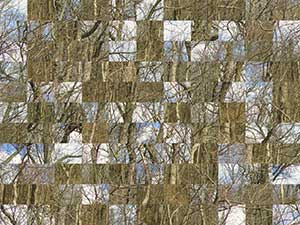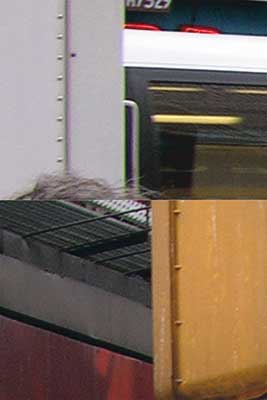


STATEMENT 5
One argument against the death penalty is the anti-hubristic case, that we humans are simply not wise enough to be able to tell who among us should live and who should die. A similar argument can be made against starting wars, that we are not smart enough to know that the war we claim will make the world better won't actually make things worse, and at massive costs of life and to the land as well. Then there are our alterations to the planet, which, in some accounts, threaten the future of life itself, and at the least threaten the survival of myriad species, thousands of which now go extinct every year. Can we truly know how right it is to destroy more rain forest in order to lower the price of a hamburger? Is our remaking of the world in our own image justifiable on balance? While we are following our desires, if seen more objectively, from the perspective of a lizard or a bird or a stone or a river, and with as inhuman an eye as we can dare to imagine possessing, we are also wreaking almost unimaginable destruction. Perhaps a history written from an extra-human perspective would see our massive reshaping of the planet we inherited as the one truly monstrous crime of our species.
A desire to alter our surroundings, to make changes which are also aggressions, seems central to our being. From that perspective, most of the greatest works of art can be seen as acts of hubristic rearrangement, as are the sublime perfections in the paintings of van Eyck and DŘrer, or the prints of the great photographer Edward Weston, whose organizations of light and form, worthy of classical music, require disregarding crucial aspects of his subjects' existence. The act of taking a photographic, or cinematic, image is arguably an act of aggression: excising a rectangular fragment from the world, the artist cleaves it off from the larger whole in order to create a composition of interest, the consciousness behind such dividing and subdividing kin to the gaze of a highway planner who looks at a forest and imagines ribbons of concrete, or the eye of a real estate developer who envisions subdivisions and malls in open fields. Is there another way? There are, indeed, hints of modesty in the quietudes of Chardin, the doubts of CÚzanne, or the respectful street photographs of Helen Levitt, but these are nonetheless self-expressive artists seeking perfections imagined in the mind's eye.
If one objects to aspects of what our species has wrought, then part of what might give life meaning could be for the individual, standing a bit apart, to try to imagine a realm beyond the human, one in which the existence of rocks is as valid as our own. If there is a defect in human thought, might there be a different path, along which our desires and imaginings could meet the larger universe? I hope I have begun to seek such a way through my use of random numbers as organizing principles in my works of 2009, Figments, Colors 2: And Not, Venues 1: Terian Center, and, most recently, Quarries. One point behind my use of randomness is to try to include possibilities beyond what my personal vision might otherwise admit, and I am glad to know that my source, random.org, draws its numbers from atmospheric noise. In Venues 1: Terian Center, each image is modified eight different ways, from color to sharpness to rotation in space to cropping, through a controlled use of randomness, revealing, I hope, that those elements, crucial for a Weston, that traditional photographers struggle to get exactly "right" can be seen from a more open and inclusive perspective as arbitrary and unimportant.
For the "Grids" portion of Quarries, I subdivide a photograph I have taken into grids up to thirteen-by-thirteen, and then rearrange the parts randomly. The purposefulness of the traditional artist — or of the real estate developer or highway planner — here meets a wider range of possibilities, one that includes disorder as well as order. While many juxtapositions in these arrays have the kinds of balances between connectedness and disjunction I seek when arranging images myself, others I would never have chosen: clusters of very similar fragments, for example, or juxtapositions that could seem overly "cute." The viewer should seek more than the harmonies artists have traditionally worked toward, opening also to imbalances and disconnections. Fragments embrace each other in every possible way; otherwise unnoticed details revealed within the original image suggest that photographs can contain worlds, universes. The luminousness of and complex relations between parts are, I hope, worthy of some of the older art that I love. But also, if the viewer feels some of the randomness of the atmospheric noise that surrounds us all flowing through these arrays, then one of my aims is achieved.
Fred Camper
Chicago, Illinois
November 24, 2009.
See also STATEMENT 6, which extends some of these ideas and refers to more recent types of Quarry works.